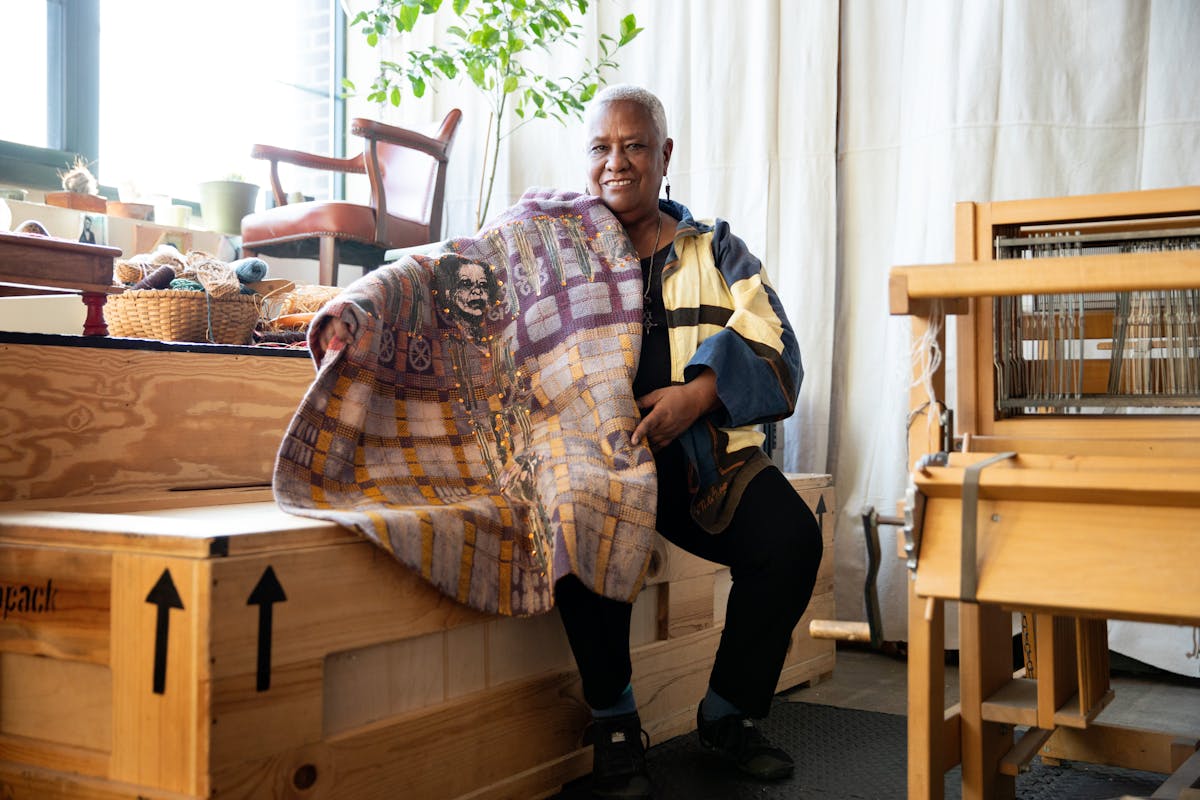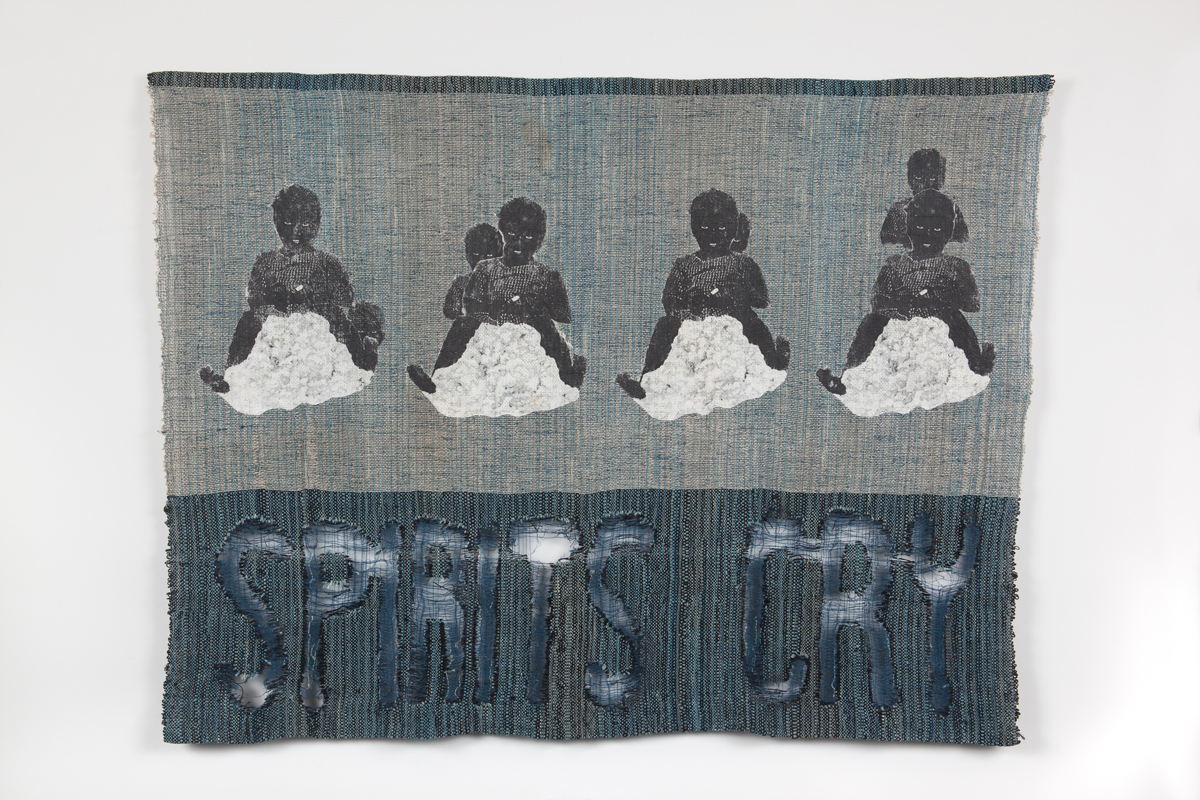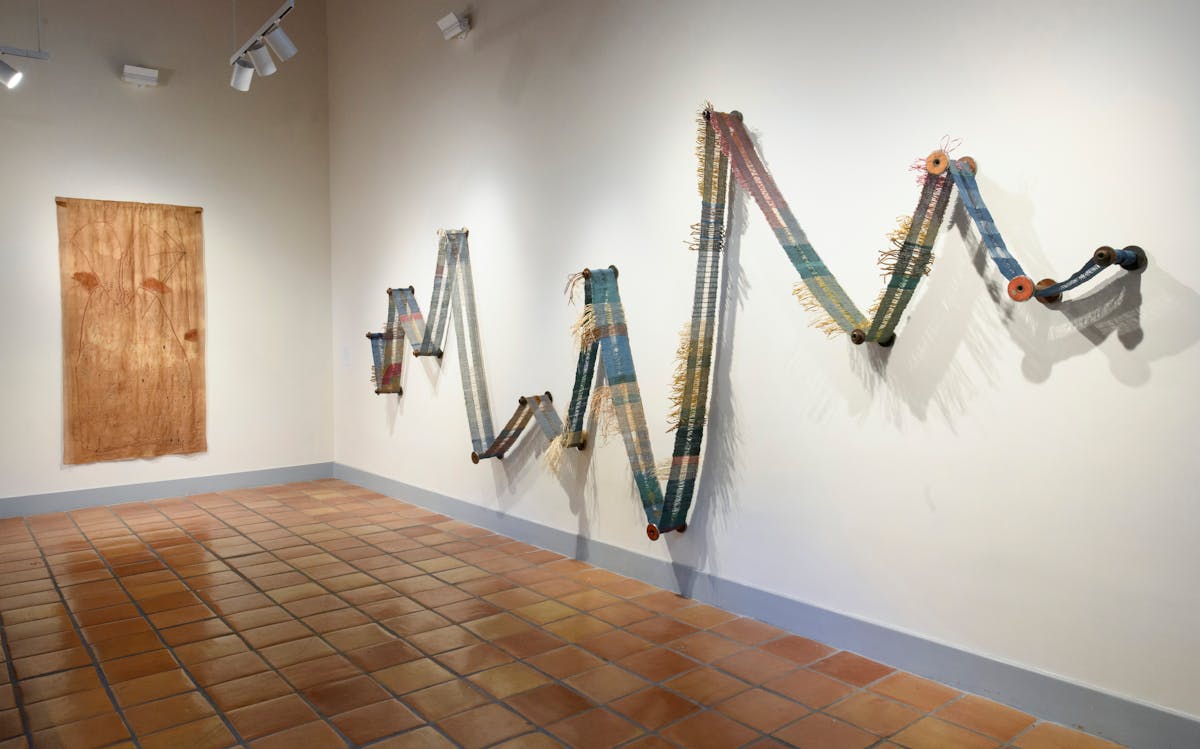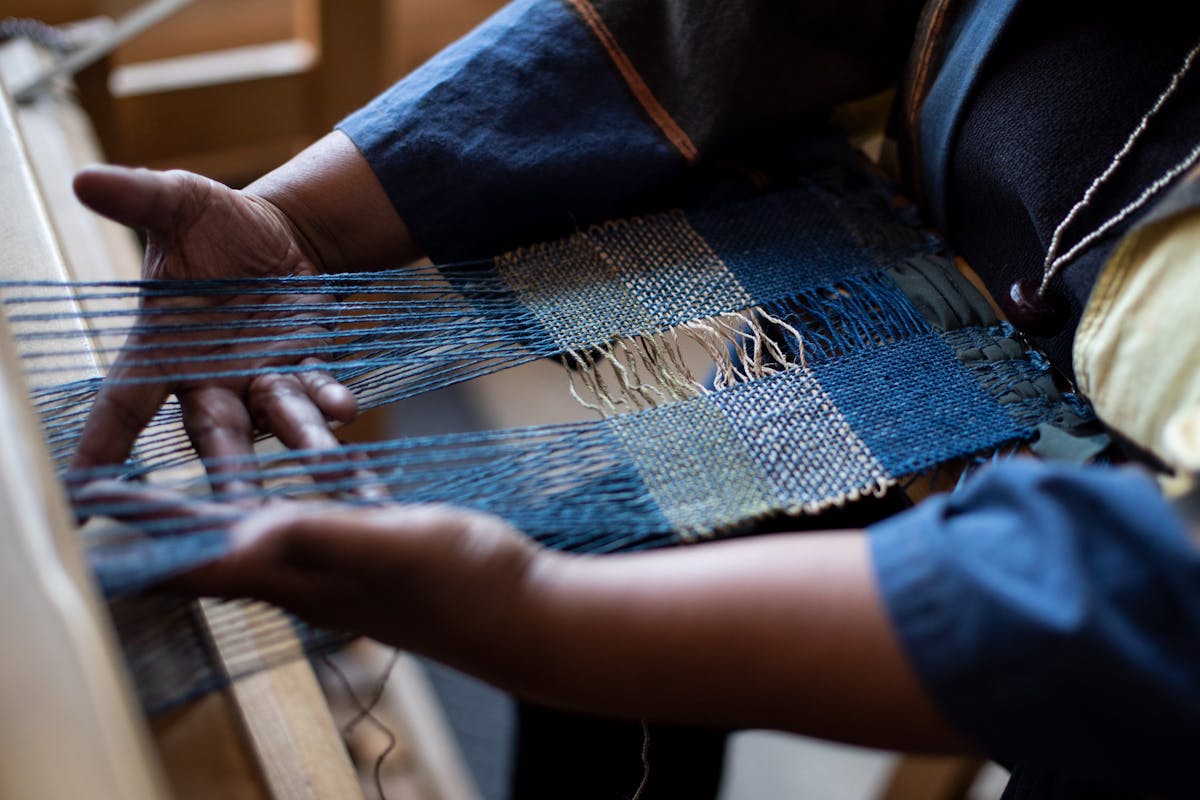Karen Hampton
Karen Hampton

Photo by Kayana Szymczak.
Alcalde, New Mexico
Karen Hampton listens to her ancestors. “They are all sitting around me. They poke me and they tell me, ‘Go do this. Go do that. You need to tell our story.’” She has, and continues to, by resurrecting them in her conceptually based fiber art. Through her training in anthropology, genealogical research, and explorations of the plantations where her ancestors were enslaved, Hampton has become their griot, their storyteller, through the medium of cloth.
Hampton, 64, is descended from a multiracial, land-owning family based in St. Augustine, Florida, during the late 18th to mid-19th centuries—a lineage she first investigated in 2006. Since then, she’s merged her handwoven textiles, digital prints and embroidery on cloth, and hand-dyed fabrics to figuratively convey her ancestors’ connections to Black American history and the African diaspora. Hampton’s merging of ancestral methods of textile production with experimental contemporary processes produces work that reflects the world in which they lived.

SPIRITS CRY, 2000, handwoven, mixed media, indigo, linen, 36 x 52 in. Photo courtesy of the artist.
A textile artist from an early age—her grandmother and mother taught her hand stitching and machine sewing—Hampton was the first African American woman to finish the fibers program at University of California–Davis. She developed her own looms and strategies, winning the coveted Eureka Fellowship award from the Fleishhacker Foundation in 2008. Her work has been collected by the Ruth and Elmer Wellin Museum of Art at Hamilton College, Clinton, New York; and by the Honolulu Museum of Art, Hawaii. She’s an assistant professor at Massachusetts College of Art and Design in Boston.

ABOVE: America, Now and Then, 2022, handwoven and dyed bast fibers, dimensions variable. Photo courtesy of the artist. RIGHT: Photo by Kayana Szymczak.

In her current work, Hampton also addresses how slavery’s legacy continues to affect African Americans’ lives, as in the water crisis in Flint, Michigan. In her paper “Stitching Race,” Hampton writes, “[E]ach time my weft crosses the warp or my needle pierces the cloth, I reach through another layer of scorched earth that slavery has left behind, and I attempt to reframe the issues of race that haunt our modern lives.”
She is also a futurist. “I use my artwork to examine the past,” she says, “to find solutions to world problems and help guide a path for human survival.”
View more work images | kdhampton.com | @k.d28
Don't Miss Our 2022 Awards Celebration
Help us honor the 20 recipients of this year's ACC Awards in an online ceremony taking place on Thursday, September 15, at 4 p.m. CT.

